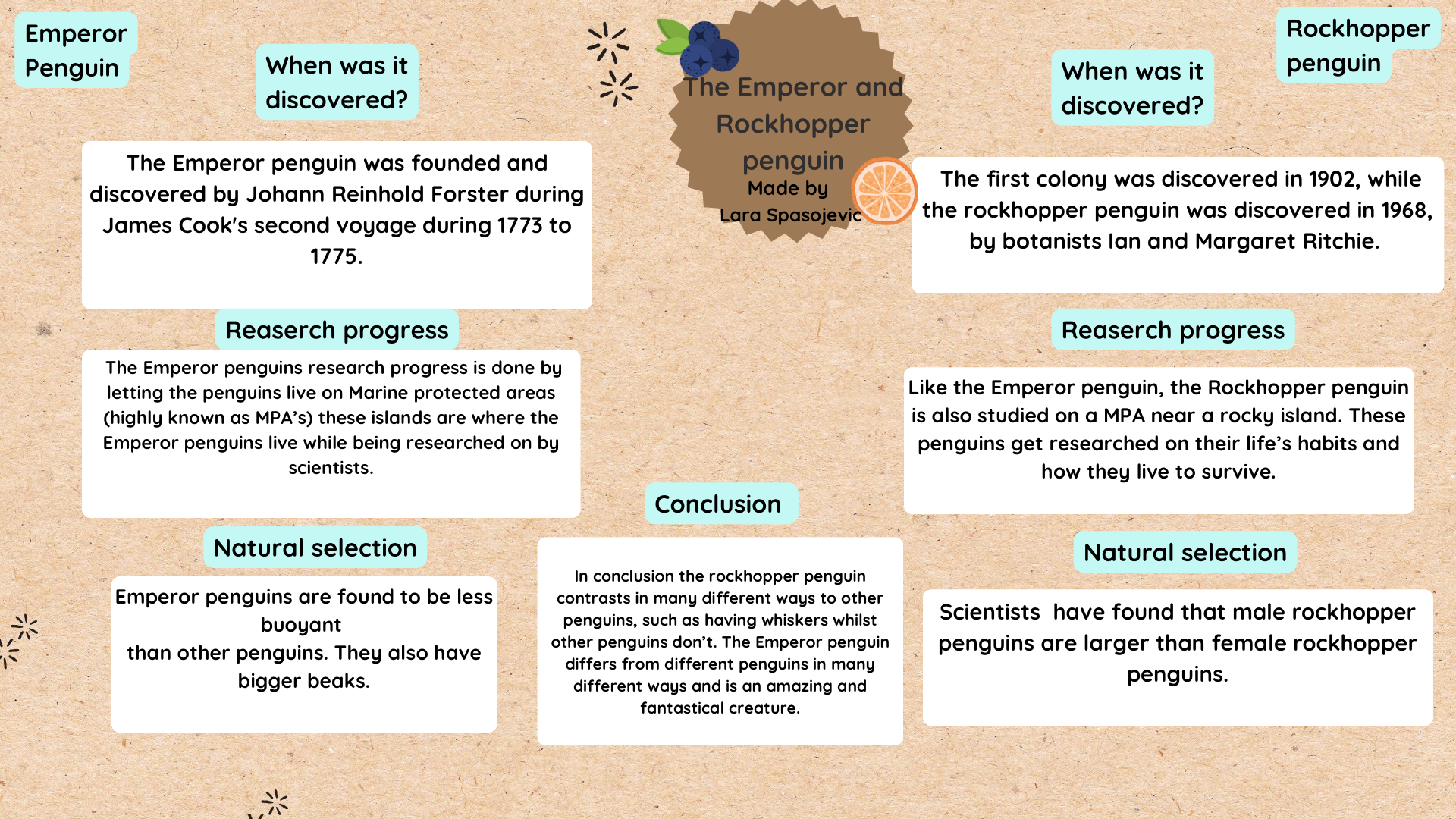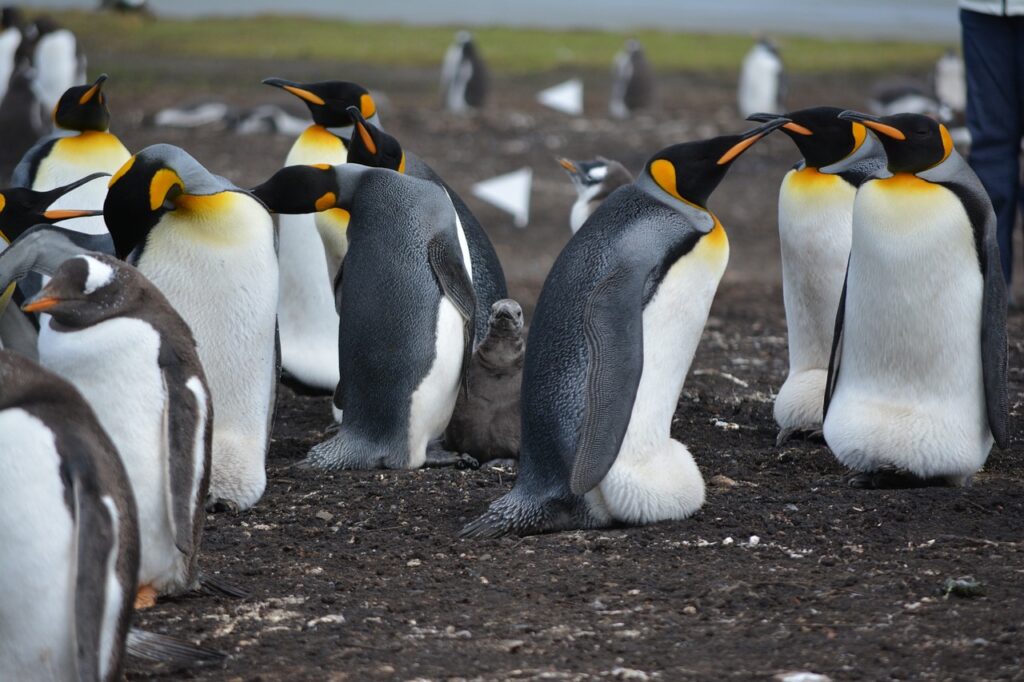The Emperor penguin
The emperor penguin lives within the lowlands of Antarctica on small, moving parts of ice. In this text we will have an overview of the Emperor penguins’ way of adaptation to other spaces and areas.
Defining characteristics
The Emperor penguin has two webbed feet to help them swim against the deep, harsh waves of the ocean, webbed feet also help the penguin to swim faster, as well as using flippers in swimming to make us go faster and to push against the current of the water, these characteristics help the Emperor penguin thrive and live.
Adaptation to the environment
The emperor penguin’s natural way of surviving and adapting to its environment is, having two layers of fluffy feathers to survive in the cold climates of Antarctica, it also uses its large storage of body fat to keep itself warm.
When was the emperor penguin discovered?
Johann Reinhold Forster founded and discovered the emperor penguin during James Cook’s second voyage from 1773 to 1775.
Research progress
The emperor penguins research progress is done by letting the penguins live on Marine protected areas (highly known as MPA’s) these islands are where the Emperor penguins live while being researched on by scientists.
Natural selection
Emperor penguins are found to be less buoyant than other penguins. They also have bigger beaks.
The Rockhopper penguin
The rockhopper penguin lives in New Zealand near rocky shores and seas. This text will give an explanation of how the rockhopper penguin adapts to a change in place or climate.
Defining characteristics
The Rockhopper penguin uses its eyes (which are different from other penguins because it can change the angle of the eye itself) to look around in water for a better look of the fish around them. They also possess distinguishing features, such as yellow whiskers and a large gray patch on their stomach, that help them stand out from other penguins.
Adaptation to the environment
The rockhopper penguin uses its appearance to deceive predators to fly away; this is because of their size and colors of their fur, this is called counter-shadowing. This is so that predators can be deceived.
When was the rockhopper penguin discovered?
The first colony was discovered in 1902, while the rockhopper penguin was discovered in 1968, by botanists Ian and Margaret Ritchie.
Research progress
Similar to the emperor penguin, researchers study the rockhopper penguin in an MPA near a rocky island. These penguins get researched on their life’s habits and how they live to survive.
Natural selection
Scientists have found that male rockhopper penguins are larger than female rockhopper penguins.
In conclusion, the rockhopper penguin contrasts in many different ways to other penguins, such as having whiskers whilst other penguins don’t. The Emperor penguin differs from different penguins in many different ways and is an amazing and fantastical creature.


About the Author

Lara is an 11-year-old student who resides in Melbourne, Australia, and is currently enrolled in Bubots.
At age six, she joined the Stage School Australia to pursue her interests in singing, dancing, and acting.
Alongside her academic pursuits, Lara enjoys engaging in artistic endeavours such as reading, drawing, and storytelling.
Her aspirations include becoming an accomplished author and artist in the future.

